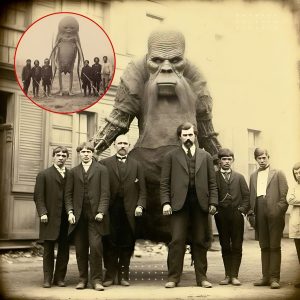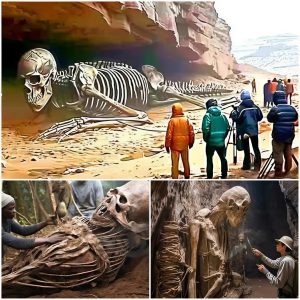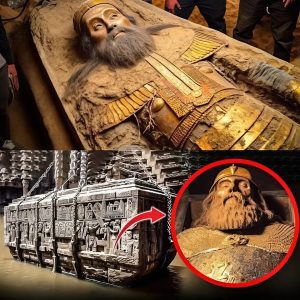In a discovery that has captured the imagination of history enthusiasts and scholars alike, the remains of England’s King Richard III have been unearthed in the most unlikely of places—a municipal parking lot in Leicester. After centuries of speculation and mystery surrounding his final resting place, the last Plantagenet king’s remains were found in a location that has rewritten history books and provided incredible insights into a controversial monarch whose life and death have been shrouded in myth and legend.
A Forgotten Grave
For over 500 years, the exact location of Richard III’s grave was lost to history. Following his death at the Battle of Bosworth in 1485, where he was defeated by the forces of Henry Tudor (who would become Henry VII), Richard was hastily buried at the Greyfriars Friary in Leicester. However, the dissolution of the monasteries by Henry VIII in the 16th century led to the destruction of the friary, and Richard’s grave was lost to time.
Local legends suggested that Richard’s body had been exhumed and thrown into the River Soar, while other tales claimed his remains had been moved. But in 2012, a team of archaeologists from the University of Leicester, driven by curiosity and armed with historical records, embarked on an audacious dig beneath a parking lot that covered what was once the Greyfriars Friary.
The Moment of Discovery
What began as a modest archaeological project quickly turned into one of the most sensational historical discoveries of the 21st century. As the team carefully excavated the site, they uncovered the remains of a skeleton with unmistakable signs of battle wounds and severe scoliosis—a spinal condition that Richard III was historically documented to have. The alignment of the burial with the choir of the friary church further suggested that these were indeed royal remains.
The skeleton bore the marks of a violent death, with injuries consistent with those inflicted during battle, including a fatal blow to the skull. Additionally, the curvature of the spine matched historical accounts that Richard had a hunched back, a fact that had been sensationalized by Shakespeare and others over the centuries.
DNA Confirms Royal Identity
Despite the strong circumstantial evidence, the team sought definitive proof that they had found Richard III. To achieve this, they turned to DNA analysis. By comparing the DNA extracted from the bones with that of living descendants of Richard’s family, scientists were able to confirm beyond doubt that the remains belonged to the long-lost king. The discovery was officially announced in February 2013, causing a global media sensation and sparking renewed interest in the life and reign of Richard III.

A King’s Controversial Legacy
Richard III’s legacy has long been the subject of intense debate. Often depicted as a villain in popular culture, largely due to Shakespeare’s portrayal of him as a ruthless tyrant in his play Richard III, the real Richard was a complex figure. Some historians argue that he was a capable ruler, concerned with justice and reform, while others maintain that he was indeed a Machiavellian schemer who may have been involved in the disappearance of his nephews, the Princes in the Tower.
The discovery of his remains has provided new opportunities to reassess his life and reign. The evidence of his injuries and the manner of his burial have offered a more nuanced view of the man behind the crown, challenging the one-dimensional caricature that has persisted for centuries.
The Reburial and Legacy
Following the confirmation of his identity, Richard III’s remains were reburied with full honors in Leicester Cathedral in 2015, not far from the site where he was originally found. The reburial was attended by members of the British royal family and attracted thousands of spectators, marking a fitting end to a journey that had spanned more than five centuries.
The story of Richard III’s discovery has not only captivated the public but also reinvigorated interest in medieval history. It stands as a reminder that the past is often closer than we think, lying just beneath our feet, waiting to be rediscovered.
A Royal Mystery Solved
The unearthing of Richard III in a humble parking lot is a tale that underscores the unpredictability of history and the enduring allure of its mysteries. It serves as a poignant reminder of the impermanence of power and the ways in which time can obscure even the most significant figures. Yet, through the efforts of determined archaeologists and historians, Richard III’s story has been brought back into the light, offering a final chapter to one of England’s most enigmatic kings.





